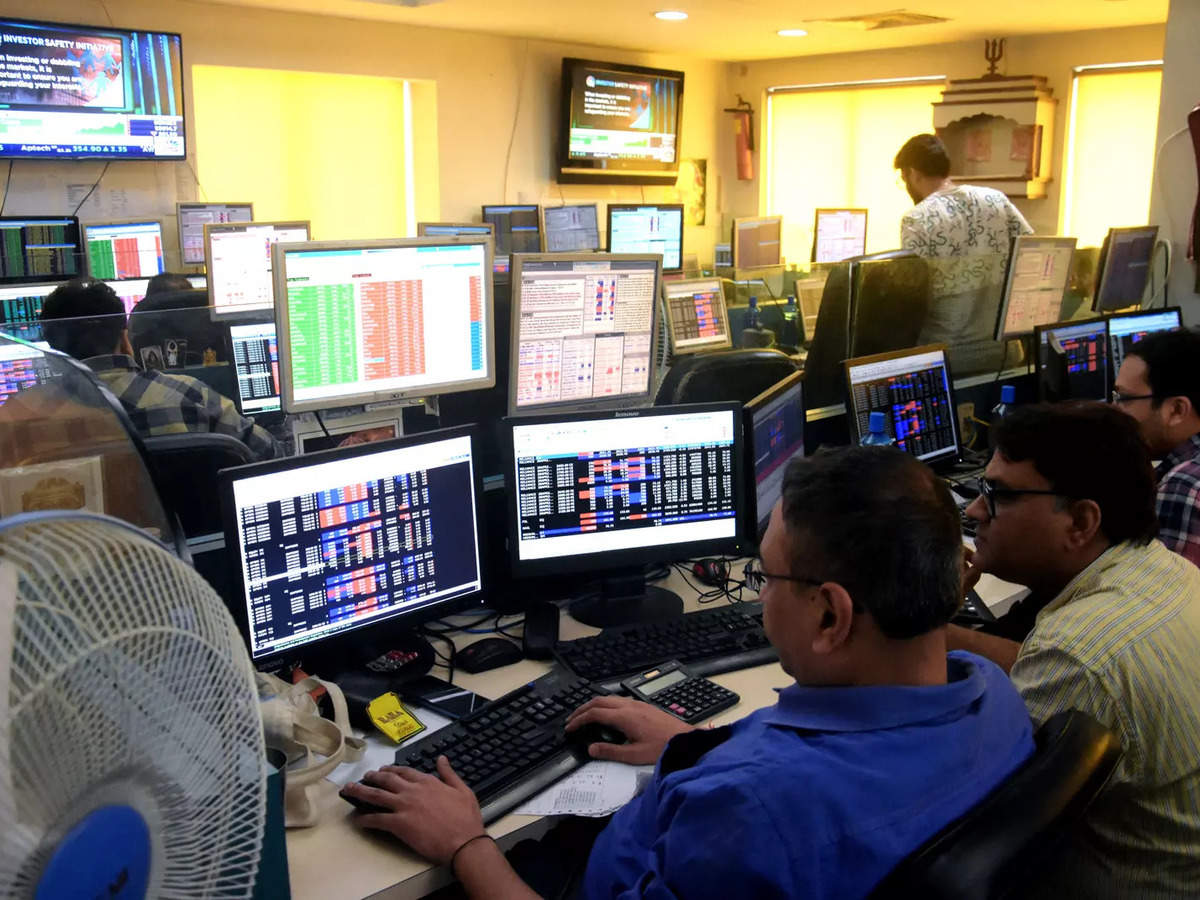Sensex tumbles over 400 pts on mounting U.S. recession fears, Nifty tests 17,750

Sensex tumbles over 400 pts on mounting U.S. recession fears, Nifty tests 17,750
On Friday, domestic benchmark indices opened in the green while keeping an eye on negative global cues. Banking and its shares have borne the brunt of the losses. The Sensex was purchasing and selling 433.83 factors, or a fall of 0.72 percent, at 59,500.18 at 9.17 am. Trading for the Nifty50 index was at 17,743.45, up 133.95 pts or 0.75 percent.

Chief Investment Strategist V K Vijayakumar of Financial Services by Geojit has stated that the marketplace has started showing some weariness. Globally, the main worry is that the fed would guide the economy in the wrong direction and raise rates excessively and quickly, sending the U.S. economy into a sharp recession.
The idea of increasing the final feed fee to 4.25 percent has been discussed. A stronger dollar, higher bond prices, and sharp price hikes all act against justice. According to Vijayakumar, it could be hard for India to maintain the decoupling from the global trend that has been an example in India recently in the current difficult situation.
Fits have stopped their consistent buying and have started selling. However, this is not a pattern. Until the Fed collects the concludes on September 21st, traders may adopt a waiting and watch strategy, suggested Vijay Kumar.
M&M dropped 2.07 percent to rs 1,270.10 in Sensex stocks and fell 2.06 percent, 1.65 percent, 1.63 percent, and 1.25 percent, respectively. And fell 1.13 percent, 1.06 percent, and 0.98 percent.

Sectorally, the nifty tech index dropped 1.56% while the nifty auto index dipped 0.84%—nifty smallcap50 and midcap50 experienced declines of 0.18 and 0.22 percent, respectively. The dollar index, which measures how the dollar performs against a basket of the six most critical international currencies, fell 0.02 percent to 109.71 degrees.
The S&P 500, dow jones, and Nasdaq all completed lower on Thursday, with a fall of 1.13 percent, 0.56 percent, and 1.43 percent, respectively. “There shall be some caution,” said Mohit Nigam, head of PMS at hem Securities, “as world ranking firm moody’s stated, India’s rated infrastructure companies can generally learn about the experience up to further depreciation in the value of the rupee against us greenback.”
Technically, the critical resistance level for the nifty50 is 18,000, and on the downside, 17,650 can function to become strong support. According to Nigam, the financial institution and sector nifty’s major resistance and support levels are 41,700 and 40,800, respectively.
Why did the market grow?
As most financial markets observed the time of Christmas, trading began to slow down at the beginning of the week. Because the crude prices plummeted, most S&P 500 industries had major falls, headed by financials (XX: SP500), materials (XX: SP500), and industrials (XX: SP500).
Lockdowns in several parts of Europe added to market anxiety about omicron, dampening bullish investors’ mood. Selling followed reports that President Joe Biden‘s centerpiece $2 trillion spending package was presented doomed. Sen. Joe Manchin, D-West Virginia, stated on Sunday how he could support it, potentially dealing Biden and Democrats a major political setback.
A group at Goldman Sachs led by chief U.S. economist Jan Hatzius reduced its prediction for U.S. growth in 2022 to be the result of the political squabbling, citing challenges in passing the spending plan. Last week, losses coincided with the Federal Reserve authorities speeding up their decrease of monthly bond buying and planning three interest percentage hikes for next year, which led to losses in all three main stock market indices.
According to Thomas Mathews, markets researcher for Capital Economics, “if concerns about the expansion of Omicron faded, stock markets would undoubtedly regain some of the ground they’ve lost recently.”
But given the chance of less benevolent money policy and fiscal policies and how far stocks have already advanced, Mathews wrote in a note, “we wouldn’t expect this to herald the beginning of another protracted rise, either.” Instead, it was expected that the pretty lackluster returns from stocks over the next few years.

Fragmented, the Nasdaq I.T. index dropped 1.56%, while the Nifty Auto index decreased 0.84%. Smallcap50 and Nifty Midcap50 experienced declines of 0.18 and 0.22 percent, respectively.
The Canadian dollar, which measures how the dollar fluctuates in relation to a composite of six important international currencies, fell 0.02 percent to 109.71.The S&P 500, Dow Jones, and Nasdaq all finished Thursday’s trading day lower, down 1.13 percent, 0.56 percent, and 1.43 percent, respectively.
“There will be some caution,” said Mohit Nigam, Director – PMS, Hem Securities, “since Global Rating agency Moody’s stated India’s rated infrastructure corporations can mainly tolerate an additional decline in the value of the rupee vs the U.S. dollar due to financial swaps and other mitigants.”
Technically speaking, the critical Nifty50 resistance level is 18,000; on the downside, 17,650 can serve to be the solid support. 41,700 and 40,800 are the crucial support and resistance levels for Bank Nifty, respectively.
edited and proofread by nikita sharma






